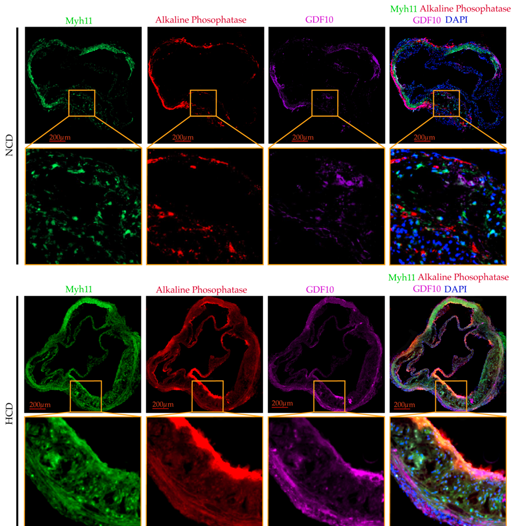[591] Athérosclérose
Atherosclerosis and its clinical complications of arterial thrombosis, myocardial infarction and stroke continue to account for the majority of morbidity and mortality worldwide. Despite the current guidelines implementing intensive lipid therapy, antiplatelet and anticoagulant medicines, the residual risk of ischemic events remains significant. A reduction and/or elimination of this residual risk could likely be achieved via a better understanding of the molecular mediators directing the complex inflammatory lipid-associated phenotype transformations of plaque cells. Under the leadership of Dr Kapka Miteva, the lab uses a multidisciplinary approach of high-dimensional parameter analysis of single-cell transcriptomics, human atherosclerosis samples profiling, and experimental atherosclerosis disease models with cell-type specific ablation or expression systems to reveal the complex interplay of factors shaping plaque stability and vulnerability. Performing extensive single-cell RNAseq analysis we revealed the plaque cells' transcriptional signature in control of foam cell formation, switch to pro-inflammatory macrophage phenotype, lipid uptake, inflammation, chondrogenic differentiation, microcalcification and thrombosis (PMID: 35163719; PMID: 35159221).
For instance, the results offered novel mechanistic explanations of clinical observations, validating our hypothesis that atherosclerotic plaque expression of sclerostin, known as Wnt-signaling inhibition acts as a defence mechanism against microcalcification and plaque destabilisation. Given the controversial data on the side effects of remosozumab, a sclerostin monoclonal antibody used to treat osteoporosis our findings supported contraindication of romosozumab treatment in patients with major adverse cardiac events risk (MACE) and argued for an update of the safety warning from FDA and EMA (PMID: 38726905) Currently under investigation are molecular regulators and targets with potential clinical benefit of abrogating plaque phenotypic cell transformations, the detrimental vascular inflammation and microcalcification and preventing the late-stage atherosclerotic lesions events of myocardial infarction or stroke.



